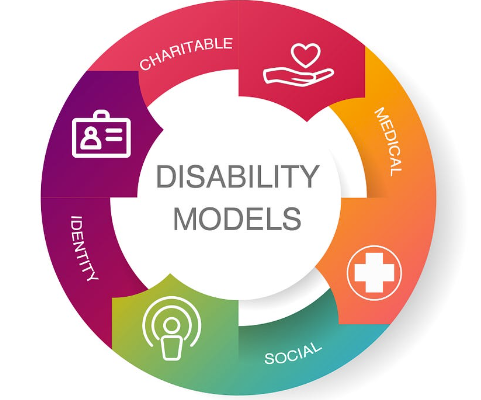Disability is a multifaceted concept that has been studied and interpreted through various theoretical models. These models provide frameworks for understanding disability, its causes, and its implications in society. By delving into each theoretical disability type, we can gain valuable insights into the diverse ways disability is perceived and addressed. In this blog post, we will explore the theoretical models of disability and their key components.
Medical Model
The medical model of disability views disability primarily as a physical or mental impairment that requires medical intervention. It emphasizes individual limitations and focuses on diagnosing and treating the condition to enable individuals to function as normally as possible. The medical model often promotes a “cure” or “fix” approach, seeking to minimize or eliminate disabilities through medical advancements. While this model has played a significant role in providing medical care and treatments, it has faced criticism for overlooking the social and environmental factors that contribute to disability and for pathologizing individuals with disabilities.
Social Model
In contrast to the medical model, the social model of disability shifts the focus from individual impairments to societal barriers that hinder the full participation and inclusion of people with disabilities. It highlights how social attitudes, physical environments, and systemic discrimination contribute to disabling conditions. According to this model, disability is not an inherent flaw within individuals, but rather a result of the barriers imposed by society. The social model advocates for removing these barriers and promoting accessibility, equal opportunities, and societal acceptance.
Biopsychosocial Model
The biopsychosocial model of disability acknowledges the interaction between biological, psychological, and social factors in determining disability. It recognizes that disabilities arise from a complex interplay of biological impairments, psychological factors (such as mental health and self-perception), and social factors (including societal norms and expectations). This model emphasizes the importance of a holistic approach to disability, taking into account the multifaceted aspects of a person’s life and functioning.
Economic Model
The economic model of disability examines disability through an economic lens, focusing on the financial implications for individuals with disabilities and society as a whole. This model highlights the economic costs associated with disability, such as healthcare expenses, assistive devices, and accommodations. It also explores the impact of disability on employment, income, and overall socioeconomic status. The economic model emphasizes the need for policies and strategies that address economic disparities, promote equal access to employment opportunities, and ensure financial support for individuals with disabilities.
Functional Solution Model
The functional solution model, also known as the rehabilitation model, centers around finding practical solutions to enable individuals with disabilities to maximize their functional abilities and independence. This model emphasizes rehabilitation, assistive technologies, and skills training as means to overcome limitations and enhance daily living, mobility, and participation. The focus is on providing individuals with the tools and support they need to lead fulfilling lives, promoting adaptation and empowerment.
Social Identity or Cultural Affirmation Model
The social identity or cultural affirmation model of disability highlights disability as an important aspect of an individual’s identity and social group membership. This model recognizes that disability can shape an individual’s experiences, perspectives, and relationships, and that it can contribute to the formation of a distinct culture and community. The model emphasizes the importance of valuing and affirming disability as part of diversity, promoting the rights, experiences, and contributions of disabled individuals within society.
Charity Model
The charity model, also referred to as the medical model in a charitable context, is based on the idea of providing support and assistance to individuals with disabilities through acts of charity or goodwill. This model places the responsibility for addressing disability on charitable organizations, often focusing on providing medical treatments, rehabilitation services, and other forms of assistance. However, the charity model has faced criticism for perpetuating dependency, reinforcing paternalistic attitudes, and neglecting systemic barriers and social inclusion.
It is important to note that while these models provide different perspectives on disability, they are not mutually exclusive, and some models can overlap or complement each other. The understanding and approach to disability have evolved over time, and contemporary discussions often integrate elements from multiple models to form a more comprehensive understanding of disability and to advocate for social change and inclusivity.
By exploring these theoretical models, we can gain a deeper understanding of disability from various angles and work towards creating inclusive societies that embrace diversity, promote equal rights and opportunities, and value the contributions of all individuals, regardless of their abilities.
What is next?
In our next installment, we’ll explore what is Medical models of disability.
For more information on why accessibility is important in general, you can check out my previous blog post here.
For further information on how In our next installment, we’ll explore the importance of captions for individuals with hearing disabilities and delve into how we can promote digital products using captions with semantic markup to enhance accessibility for those with hearing impairments.to make your product accessible to your audience, contact our experienced design experts, check out our Accessibility IQ for your website, download our guide Digitally Accessible Experiences: Why It Matters and How to Create Them, read more from our UX for Accessible Design series.

